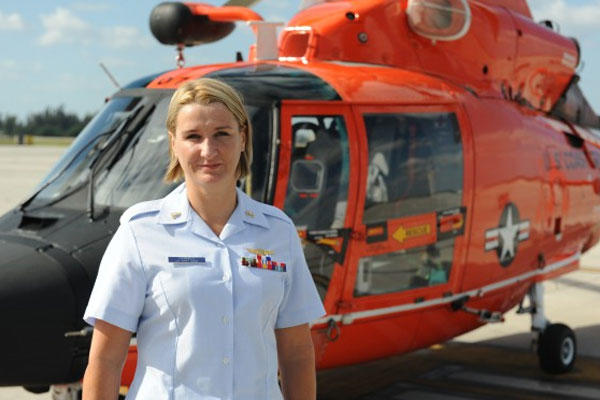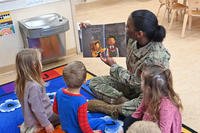When the motor vessel Marine Electric was caught in a winter storm in the early hours of Feb. 12, 1983, their 605-foot ship capsized, tossing 34 crewmembers into the 39-degree waters east of Chincoteague, Va.
The Marine Electric radioed a mayday and soon a helicopter crew from Air Station Elizabeth City, N.C., was airborne. When the crew arrived on scene they lowered a rescue basket to a survivor; hypothermic and exhausted, they did not have the strength to climb in.
After several attempts, the helicopter crew was forced to move on to the next survivor. They too were unable to climb into the basket under their own strength. It was a painful site for these lifesavers. By day’s end, even with the assistance of an additional Navy helicopter, only three of the 34 crewmembers survived.
An investigation was conducted in this tragic loss of life and a congressional hearing convened. On Oct. 30, 1984, Congress acted on the hearing’s findings and directed the Coast Guard to “establish a helicopter rescue swimming program for the purpose of training selected Coast Guard personnel in rescue swimming skills.”
While there were many aviation rates already in the service, it was soon decided the aviation survivalman rating, already identified with sea survival, was the most easily transformed. As the transition took place there was many concerns raised, but the one that stood out the most was whether the new program would be open to women.
The already challenging rate would become even more demanding due to the physical requirements of performing the duties of a rescue swimmer. In addition, no other service allowed females in similar programs at the time. After much considerable thought, the Coast Guard decided any physical fitness standards would be both “mission specific” and gender blind; meaning women who possessed the strength and stamina were as eligible as men to become rescue swimmers.
It was an historic moment for the Coast Guard. Fast forward to today and Chief Petty Officer Karen Voorhees is now part of this history. Voorhees is the first woman to advance to chief petty officer in the rate of aviation survival technician since women were integrated into Coast Guard active duty service in 1973.
“In 1976 we had the first female graduate from aviation survivalman school. In 1986 we had the first female graduate from a navy rescue swimmer school. Twenty-seven years later we have the first aviation survival technician promoted to the rank of chief petty officer,” said Capt. Joe Kimball, commanding officer of Air Station Miami.
“As of this morning, aviation survival technician was the last rate, of all the currently active rates in the Coast Guard, that had never had a female to the rank of chief petty officer,” added Kimball.
This milestone was put into perspective by Voorhees herself who spoke about raising young women who are “smarter and stronger.”
“I think that if we treated our girls with the same respect and initiative that we treat boys and expect them to live up to the standards we set them instead of lowering the standards for the girls to meet, I think we will do much better and I think we will have a lot more females in the military, in aviation, just running the world,” said Voorhees during an interview May 15, 2013.
Voorhees’ milestone proves that with hard work and dedication, you can accomplish your goals. And whether you’re running the world or donning fins and a mask to plunge into the water and save lives, your dreams are possible – man or woman.






























